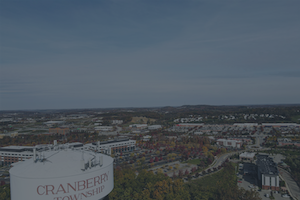Growing school districts are working hard to accommodate more students
Summary: As rural fields turn to housing developments, more and more students enroll in the county’s busiest school districts. Administration teams and school boards at places like Seneca Valley and Mars are going to great lengths to accommodate growth.
Don't miss out on "Tracking our Progress" — a series that covers how officials are framing the county for success with infrastructure projects and expansion of judicial and emergency services. Also, see how others like school districts are facing the challenges as nonprofits such as those that feed neighbors in need.
The stories in this series will be released regularly over the next month for digital Butler Eagle subscribers and in a special print edition on Oct. 22. Subscribe now or log in below to start reading.
As rural fields turn to housing developments, more and more students enroll in the county’s busiest school districts. Administration teams and school boards are going to great lengths to accommodate growth.
Tracy Vitale, superintendent at Seneca Valley School District, said the district has educated between 7,200 and 7,300 students over the last three school years.
The number is climbing fast. She said the prediction is 8,000 students by 2029. Enrollment for the current school year has increased by 100 students.
“That would be a really difficult challenge in some of our smaller districts in Butler County, but at Seneca Valley, 100 is a very manageable number,” Vitale said.
She said lower taxes, getting more for their money when buying or building a home and the choice to live in a rural neighborhood, housing development or quaint small town are among the many reasons families choose Seneca Valley.
“You have all these choices and a lot of amenities suited to you,” Vitale said.
When Vitale moved 15 years ago from assistant superintendent to superintendent, there wasn’t a long-term plan for buildings throughout the district.
“For the last 15 years, we have been very focused on future-focused planning,” she said.
Vitale said most school districts across the U.S. plan for enrollment in the upcoming school year when considering their annual budget.
“The bigger you are, the larger the scale for planning and the more proactive you have to be,” she said.
Based on the advice of administration, the Seneca Valley school board approved hiring a demographer to perform a feasibility study to look at future enrollment. It also reviewed plans for a $165 million intermediate high school renovation and performing arts center, which many taxpayers loudly opposed.
The renderings released by the district showed a new three-story addition to include 43 classrooms, 12 science labs, a biotechnology lab, a variety of flexible collaboration spaces, state-of-the-art areas for music, theater and the performing arts, and expanded spaces for special education and life skills programs.
She said 15 years ago, many farms dotted the district’s landscape, but many farmers have sold their land to developers or have shale gas wells on their properties.
The district’s 100 square miles makes it the largest school district, by acreage, in Butler and Allegheny counties. Currently, Vitale said 60% of the district’s students live in fast-growing Cranberry Township, but once-rural municipalities within the district are seeing development as well.
“There is room to grow in Jackson and Lancaster (townships),” Vitale said.
Because of the steady increase in housing, Vitale spends a significant portion of her time keeping up with plans being presented to the township supervisors and borough councils in the district.
“My job is to stay very close to those township and borough planners,” Vitale said.
She then relays information on development to the district’s demographer.
“A majority of my day is ‘What are we going to do with our buildings in five, six or seven years?’” Vitale said.
She said planning for the innovative Ehrman Crest Elementary School, which was built in Cranberry Township in 2022, began in 2013.
She said eight developers have called the district to inquire about the property where the recently razed Evans City Elementary/Middle School sat along West Main Street in the borough, but the district plans to hang onto the property.
Vitale said when considering potential renovations at the old Evans City building and the intermediate high school, the school board decided seven years ago to build a new school on property purchased 20 years before on Ehrman Road, instead of disrupting learning at the Evans City building by renovating.
She said the next building to be upgraded will be the intermediate high, which is beside the senior high. The building, which educates 1,180 ninth and tenth graders, has been patched up many times since its construction in 1964.
Vitale said the large renovation project — which has drawn criticism at recent meetings — would take seven years to complete and will include an enclosed connector to accommodate students, who now go between the two schools outside.
“We’re putting in the connector so senior high students can share the amenities that will be coming to the (renovated intermediate high),” she said.
Another element included in the project is a new performing arts center, which could break ground in three to five years.
Vitale said neither the auditorium in the senior or intermediate high can seat the entire student population, which makes it difficult to plan for speakers or assemblies.
“We have to run multiple assemblies throughout the day and it’s very disruptive to classes,” she said.
In addition to construction, Vitale said new buildings and renovations to accommodate growing school populations entails adding bus routes and stops, hiring new teachers to keep class sizes low and many other considerations.
“We see (growth) coming, so we are ready, but it still doesn’t make it easy,” she said.
Vitale said while other districts are closing buildings due to fewer students and a lower tax base, Seneca Valley is constantly looking to the burgeoning future.
“I’d rather be on this side of the equation,” she said.
Regarding the district’s student-teacher ratio, Vitale said the average district-wide ratio is 14 students to one teacher.
“We are proud we’ve kept that, but we’ve hired a lot of teachers,” she said.
This year, a large portion of the 100 new students are kindergartners. Vitale pointed out that once those students reach ninth grade, the upgrade at the intermediate high school will be complete.
“As long as you are doing intentional, future-focused planning, (growth) is manageable,” she said.
Mars Area School District is much smaller than Seneca Valley, but is seeing continued growth. Mars has expanded programs and engaged in construction projects to accommodate the children of those seeking lower taxes in Butler County.
Mark Gross, Mars superintendent, said the school board approved his team’s recommendation to commission a study on future student enrollment, which was completed and presented to the board on March 4.
The study projects student enrollment could reach 4,000 students by the 2030-31 school year, which is up from the current enrollment of 3,603.
Gross said the study revealed the district could expect to gain about 46 students for every 100 new single-family detached homes that are built.
Today, 17 single- and multifamily construction projects with a combined 1,099 “units” are in the planning stages or under construction in the district, Gross said.
Regarding grade levels, kindergarten and first grade, plus grades seven through 12, are forecast to grow, while student population in grades two through eight appear to be declining, he said.
“The board and administration felt that it was appropriate to commission a recent study on student enrollment to ensure that our decisions relative to building expansion accurately reflect the number of students that we are anticipating,” Gross said. “We certainly did not want to assume anything in the process.”
The board at that time also approved a $24 million expansion project at Mars Area Elementary School. The project would see a new, three-story wing housing 18 grade level classrooms, seven kindergarten classrooms, five additional classrooms and a new cafeteria/kitchen.
Once the project is complete, the elementary school would house students in kindergarten- through third-grades, and fourth grade would be moved to the centennial school when a future expansion project at that building is complete.
The primary center would be held in reserve for administration offices, district programs and other uses.
However, bids for the elementary school project came in much higher than expected, and the board voted unanimously to reject all bids. The school board will consider possible adjustments to the project to make it more affordable, then send the project out for bids again, according to Gross.
He said Mars will continue to be proactive regarding future growth in the district, which many parents seek out.
“A major decision individuals face when choosing a permanent residence is balancing affordability with quality of life,” Gross said. “I believe the Mars Area School District offers the perfect blend of both.”
He said district parents appreciate that affordability, coupled with the opportunity to raise their children with a quality of life reminiscent of a close-knit, smaller community.
“Our schools are small enough to foster a family-like atmosphere, yet large enough to offer a wide range of strong academic and extracurricular programs,” Gross said.
Conversely, smaller and more rural school districts in the county are seeing decreasing student numbers.
Alfonso Angelucci, superintendent at Slippery Rock Area School District, said student population in his district has steadily declined since the 2000-01 school year.
“In the last 25 years, we’ve lost about 900 students,” Angelucci said. “In overall enrollment, we had 1,800 students last year, and we have 1,750 this year.”
While he is unsure exactly why the district has seen such a drop, he attributes it in large part to families aging out of public education.
“There are not as many young families moving in,” Angelucci said.
Har-Mer Elementary School in Harrisville was closed during the 2014-15 school year due to declining enrollment, he said.
“That took us down to two elementary schools, from three,” Angelucci said.
The former elementary building was purchased by Slippery Rock University and now houses its physician assistant program.
Students from Har-Mer Elementary were sent to Slippery Rock Area Elementary School just outside of the borough, where they continue to attend.
As for the future, Angelucci said the district is hoping more young families move in.
“We keep generating educational programs that are attractive to families and strive to keep our student achievement scores as high as we can to attract those families,” he said.
Angelucci summed up the basic truth for all county school districts, whether growing, stagnant or declining in student enrollment.
“The data speaks for itself,” he said.










